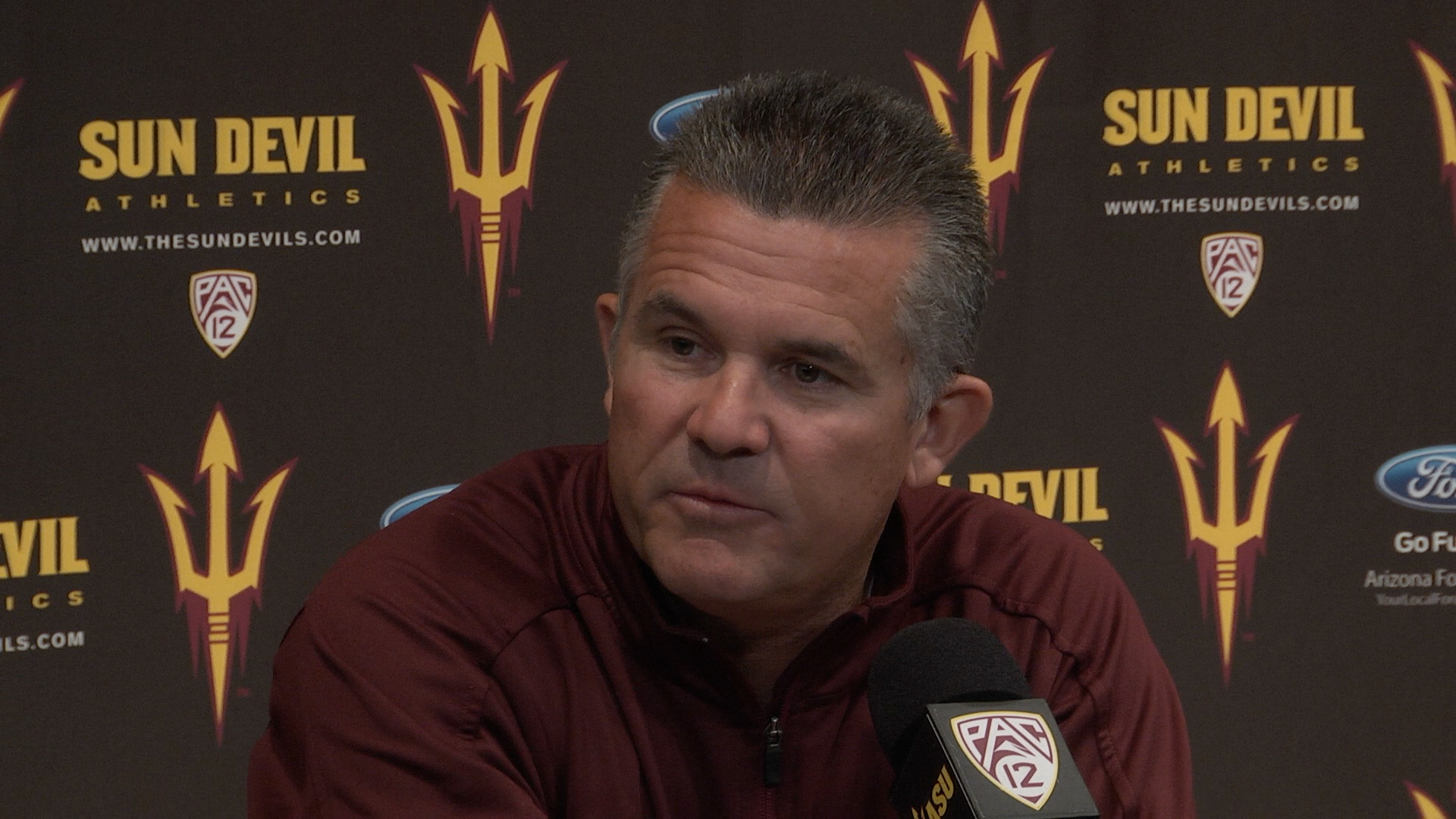When the Pac-12 expanded to a twelve team football league in 2011 a lot of close observers suspected Arizona State might be the biggest benefactor.
Nearly three full season later, it’s looking like that theory is being proven increasingly true.
When Colorado and Utah entered the league it was split into two divisions, the North and South, with the newcomers joining ASU, Arizona, USC and UCLA.
With its win over Utah Saturday, ASU is now 6-0 against the two newcomers since they arrived in the Pac-12 and only the most recent win was even competitive.
Timing has been a big factor in the positive development for ASU. There’s constant ebb and flow with the strength of programs.
Colorado was very good through much of the 1990s but has more recently fallen on very hard times.
Utah’s adjustment to the Pac-12 hasn’t been as smooth as it would have hoped, to say the least. It played in two BCS bowls as a member of the Mountain West Conference in the mid-to-late 2000s, but won’t fare better than the Sun Bowl in its first three Pac-12 seasons and currently has a 1-5 record in league play.
Additionally, the North has been the stronger of the two divisions to this point, with Oregon and Stanford arguably the best two teams in the league in each of the three seasons and Oregon State and Washington also tending to be good teams.
By nature of the nine game conference schedule, ASU hasn’t had to play one of Oregon or Stanford in each of the three years since the conference expanded, a benefit to be sure.
The net effect of this is the Sun Devils, with three games remaining this season, have already clinched back-to-back winning seasons in conference play for the first time since 1996-97, a 15 year span.
Certainly, second year coach Todd Graham has had a lot to do with that as well. But Graham came to the Sun Devils not just at the right time for ASU, but the perfect time for him.
Playing Oregon and Stanford every year instead of Colorado and Utah would have been a tougher challenge, and Graham and the Sun Devils have also benefited by USC probation and the dreadful coaching job done at the school by Lane Kiffin.
Graham knows all this, of course. That’s why he labeled last season’s 8-5 (5-4) season as an acceptable start but not good enough to put the team where he wants it: a Pac-12 title game.
UCLA has best taken advantage of not having to play both Oregon and Stanford, as it only faced Stanford in each of the expanded league’s first two seasons and made it to the championship game both years.
But the Bruins have an advantage over ASU in an area vital to success and that’s proximity to talent. History has proven that UCLA will get a lot of great prospects regardless of whether is especially good or not.
For ASU, the benefit of winning seasons, ranked teams and potential league championship games is more measurable in terms of what it will yield in brand recognition and recruiting success.
With the Sun Devils currently sitting 5-1 in league play, a game up on UCLA and USC with three to play, that’s an opportunity too good to pass up.


